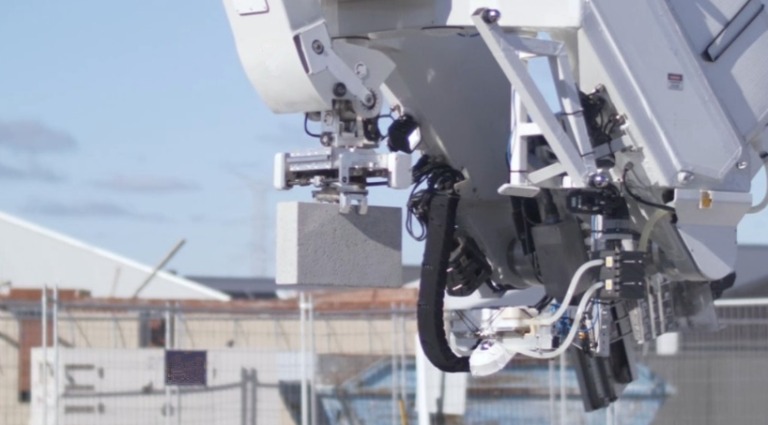While the construction industry has traditionally been one of the least automated, recent improvements to robots and the ever-increasing demand seen across every industry have begun to drive change.
 Construction robotics is now one of the fastest growing industries in the world, with estimates that gross sales will grow from less than $23 million in 2018 to as much as $226 million by 2025. The use of construction robots can not only ensure more reliable project quality, but also greatly improve the operating efficiency of the entire project. And when building efficiency is greatly improved, engineering quality problems caused by personnel fatigue or human error are also reduced.
Construction robotics is now one of the fastest growing industries in the world, with estimates that gross sales will grow from less than $23 million in 2018 to as much as $226 million by 2025. The use of construction robots can not only ensure more reliable project quality, but also greatly improve the operating efficiency of the entire project. And when building efficiency is greatly improved, engineering quality problems caused by personnel fatigue or human error are also reduced.
But these advancements come with their own quality questions, as robot accuracy and environmental factors can affect the project. API’s state-of-the-art Radian Laser Tracker and SmartTrack Sensor (STS) can help eliminate these concerns by ensuring proper assembly and alignment of key components at the site, performing routine maintenance and inspection checks and compensating the robot end-effector’s terminal position in real-time
As the construction industry goes through an automation revolution, companies have begun to pursue higher quality and efficiency through the use of construction robots. When building, the operator only needs to transfer the designed model drawings into the system, and the robot can automatically apply the cement mortar and build bricks according to the plan drawings. And because these robots can run autonomously, they can continue construction for 24 hours.
In order to ensure the accuracy and efficiency of the operation, however, the company needs to pay special attention to two issues during operation or daily maintenance and debugging of the robot:
– During outdoor construction work, whether from wind or other environmental forces, the robot’s telescopic arm experiences vibration, which can cause its end-effector to shift positions and be unable to accurately locate its target for brick placement;
–  The function of the end-effector of the robot is complex, and it needs to perform automatic grout, brick cutting, transmission, and extension functions at the same time, which requires the coordination error between its related key components be controlled within a very small range. To ensure seamless completion of the entire work process when building the robot assembly and regular maintenance and inspection, the robot’s key components must be fine-tuned and calibrated to ensure that the expected results are achieved during the construction work.
The function of the end-effector of the robot is complex, and it needs to perform automatic grout, brick cutting, transmission, and extension functions at the same time, which requires the coordination error between its related key components be controlled within a very small range. To ensure seamless completion of the entire work process when building the robot assembly and regular maintenance and inspection, the robot’s key components must be fine-tuned and calibrated to ensure that the expected results are achieved during the construction work.
The use of API’s Radian Laser Tracker series and STS efficiently solves the above problems. Radian can implement static and dynamic 3D and 6D precision measurement operations within a range of more than 160 meters and with micron level measurement accuracy. Radian Laser Trackers are the premiere solution for large-scale precision measurement.

Solution to Terminal Positioning
Radian and STS automated 6DoF sensor can be used to conduct real-time positioning and guidance for the end of the building robot to form a closed-loop control, so as to ensure the robot is accurately performing its actions.
When measuring, the company only needs to set up Radian around the construction robot and install STS on the end-effector of the robot; Radian’s laser tracks STS’s movement in real-time, and continuously collects position data at high speeds. At the same time, this data is transmitted to the metrology software for comparison of real-time data and nominal data. The deviation value is sent to the robot’s control system for compensation adjustment, which realigns the real-time positioning and guidance of the robot end.
Assembly, Maintenance and Inspection of Key Components of Robot End-Effector
For the assembly and inspection of the key components of the robot end-effector, the Radian laser tracker can be used in conjunction with an SMR for quick, accurate data collection.
During measurement, Radian is set up around the end mechanism. The operator holds the SMR to the feature being measured. Radian tracks the SMR in real-time and collects target position of the SMR. Geometric data, through the collection of several key data points, the relevant lines, surface and body features, etc. can be constructed in the metrology software. The actual measured value can be compared with the nominal value to obtain the deviation, which is then used to adjust the robot’s components to provide a strong and stable base for its operations.
For more information: www.apimetrology.com
Tags: 3d vina, hiệu chuẩn, hiệu chuẩn thiết bị, Laser Tracker Optimizes Construction Robot Performance, máy đo 2d, máy đo 3d, máy đo cmm, sửa máy đo 2d, sửa máy đo 3d, sửa máy đo cmm

